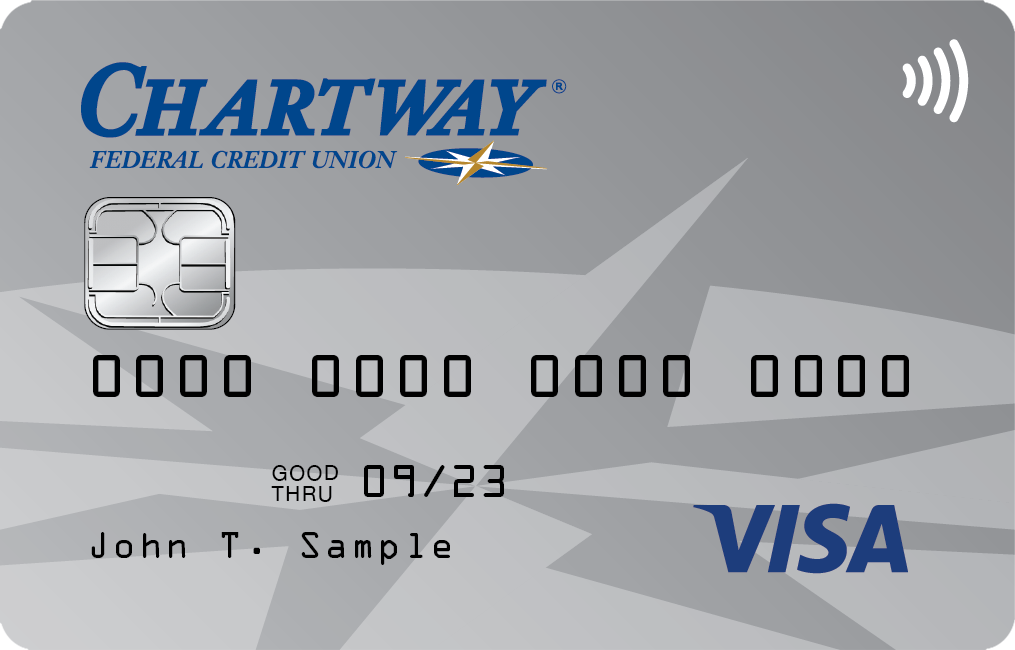- myFICO® Forums
- FICO Scoring and Other Credit Topics
- Understanding FICO® Scoring
- Re: 9% UTI --> 10% UTI = 9 point drop. But what is...
- Subscribe to RSS Feed
- Mark Topic as New
- Mark Topic as Read
- Float this Topic for Current User
- Bookmark
- Subscribe
- Mute
- Printer Friendly Page
[Update] UTI 9% --> 10% = 9 point drop. But what is 10%?
Is your credit card giving you the perks you want?
Browse credit cards from a variety of issuers to see if there's a better card for you.
- Mark as New
- Bookmark
- Subscribe
- Mute
- Subscribe to RSS Feed
- Permalink
- Report Inappropriate Content
Re: 9% UTI --> 10% UTI = 9 point drop. But what is 10%?
@Anonymous wrote:I applied for one of my credit cards on December 23rd, 2018, which was approved right away, and all the credit score monitoring services are counting it as being opened from December 1, 2018. My Experian report from yesterday shows the age of my youngest account as 2 months now, even though the account was opened 43 days ago. It's as if FICO is using a floor function for the day of the month.
In that case, it's more that historically the CRAs have only stored the month/year of account opening, not the day.
Since the CRA data is all FICO has to work with, they end up treating all accounts as having been opened on the first day (or perhaps first business day) of the listed month.
That does mean that an account opened on the 31st, and reported shortly afterwards, will start out at 1 month old.
EQ9:847 TU9:847 EX9:839
EQ5:797 TU4:807 EX2:813 - 2021-06-06
- Mark as New
- Bookmark
- Subscribe
- Mute
- Subscribe to RSS Feed
- Permalink
- Report Inappropriate Content
Re: [Update] UTI 9% --> 10% = 9 point drop. But what is 10%?
@SouthJamaica wrote:Update 2/3/19
When one account dropped from 45% to below 1%, causing aggregate utilization to drop from 9.35% to 8.17%, the 9 points came back in FICO 8.
You've had the only percentage numbers that matter all along - the ones you calculated on your own by dividing balance by credit limit.
FICO was using ceiling(9.35) which returned 10. You lost 9 points due to utilization being in the [10,30) internal FICO algorithm interval.
( 10 ≤ 10 < 30 ) = True
( 0 < 10 < 10 ) = False (Optimal Interval)
FICO was using ceiling(8.17) which returned 9. You gained 9 points due to utilization being in the (0,10) internal FICO algorithm interval.
( 10 ≤ 9 < 30 ) = False
( 0 < 9 < 10 ) = True (Optimal interval)
- Mark as New
- Bookmark
- Subscribe
- Mute
- Subscribe to RSS Feed
- Permalink
- Report Inappropriate Content
Re: 9% UTI --> 10% UTI = 9 point drop. But what is 10%?
@iv wrote:
@Anonymous wrote:I applied for one of my credit cards on December 23rd, 2018, which was approved right away, and all the credit score monitoring services are counting it as being opened from December 1, 2018. My Experian report from yesterday shows the age of my youngest account as 2 months now, even though the account was opened 43 days ago. It's as if FICO is using a floor function for the day of the month.
In that case, it's more that historically the CRAs have only stored the month/year of account opening, not the day.
Since the CRA data is all FICO has to work with, they end up treating all accounts as having been opened on the first day (or perhaps first business day) of the listed month.
That does mean that an account opened on the 31st, and reported shortly afterwards, will start out at 1 month old.
All that matters is that you're right, and the smallest unit of measure they use is 1 month. But they do have the exact opening date, because I can see it at Credit Karma (image below). myFICO and Experian just show the month/year, but that's ok and doesn't make a bit of difference either way.
I was really happy to see my new cards start out at 1 month old when one was 10 days old and the other was only 8 days old when it reported!

- Mark as New
- Bookmark
- Subscribe
- Mute
- Subscribe to RSS Feed
- Permalink
- Report Inappropriate Content
Re: 9% UTI --> 10% UTI = 9 point drop. But what is 10%?
@Anonymous wrote:
But they do have the exact opening date, because I can see it at Credit Karma (image below). myFICO and Experian just show the month/year, but that's ok and doesn't make a bit of difference either way.
Yes and no... it depends on the CRA. Equifax (and possibly Transunion) are currently reporting the actual day. Experian still is not (on the real reports, not just in a particular CMS display).
If all three had been recording/reporting down to day granularity back when the earlier FICO models were created, then FICO would likely have used that data (just as they do use the exact day from inquiry data, which is/has been reported consistently at all three CRAs).
EQ9:847 TU9:847 EX9:839
EQ5:797 TU4:807 EX2:813 - 2021-06-06
- Mark as New
- Bookmark
- Subscribe
- Mute
- Subscribe to RSS Feed
- Permalink
- Report Inappropriate Content
Re: 9% UTI --> 10% UTI = 9 point drop. But what is 10%?
@iv wrote:
@Anonymous wrote:
So sometimes the way that FICO rounds and the way the presentation software rounds can look the same - 8.50 will be rounded to 9 in both.
But any value greater than 8 and less than 8.50 will most likely be 8 on the presentation side and 9 with FICO.
Saying that there's a threshold at 10%, and that ceil(9.00000001) == 10... is just a roundabout way of saying that the threshold is at 9.0̅%, with the only question there being >9.0̅% or >=9.0̅%.
Since the results of ceil() "rounding" are functionally equivalent to a threshold-1... the real question is whether it's a simple threshold, as "conventional wisdom" tends to have it, or as SJ suggests, actual up/down rounding (of any sort, but if used, most likely controlled by the language/tools originally used to implement the scoring model).
I'd suggest that the 0.5% or 1% possible difference in these cases is not meaningful from a scoring model development perspective, and most people (at least most people who are aware of utilization thresholds) wouldn't try to skate quite so close to the edge on these percentages that it would matter, anyway. (Present company excluded, of course, but you fine people are doing this for research purposes...)
My interpretation of utilization percentage intervals is pretty much entirely based on posts by @CreditGuyInDixie , which come up in virtually every thread related to utilization on these forums. His answers to a bunch of utilization questions I had are answered in this thread:
I don't see anyone disagreeing with him or @Thomas_Thumb (also posting in that thread), so I just decided to accept the use of a ceiling function as 'fact' and run with it because it seems the most logical way for FICO to segment utilization intervals and compare our values to them. But, I'm always open to new thoughts on this, from you, or anyone!
You wrote: "Saying that there's a threshold at 10%, and that ceil(9.00000001) == 10... is just a roundabout way of saying that the threshold is at 9.0̅%, with the only question there being >9.0̅% or >=9.0̅%."
Your reply, which is perfectly correct, reminds me so much of a COBOL programmer I once worked with! That's a compliment, no matter what these Node.js and Python whippersnappers might say!
- Mark as New
- Bookmark
- Subscribe
- Mute
- Subscribe to RSS Feed
- Permalink
- Report Inappropriate Content
Re: 9% UTI --> 10% UTI = 9 point drop. But what is 10%?
@iv wrote:
@Anonymous wrote:
But they do have the exact opening date, because I can see it at Credit Karma (image below). myFICO and Experian just show the month/year, but that's ok and doesn't make a bit of difference either way.Yes and no... it depends on the CRA. Equifax (and possibly Transunion) are currently reporting the actual day. Experian still is not (on the real reports, not just in a particular CMS display).
If all three had been recording/reporting down to day granularity back when the earlier FICO models were created, then FICO would likely have used that data (just as they do use the exact day from inquiry data, which is/has been reported consistently at all three CRAs).
That's a really good point about that inquiry data. On January 23rd, I got a myFICO alert that my TU score went up +4 points. January 23, 2018 is the date of one of my inquires which shows at TU only.
I know it's always possible that something else could have changed, but what a coincidence!
- Mark as New
- Bookmark
- Subscribe
- Mute
- Subscribe to RSS Feed
- Permalink
- Report Inappropriate Content
Re: 9% UTI --> 10% UTI = 9 point drop. But what is 10%?
@Anonymous wrote:
@iv wrote:
@Anonymous wrote:
But they do have the exact opening date, because I can see it at Credit Karma (image below). myFICO and Experian just show the month/year, but that's ok and doesn't make a bit of difference either way.Yes and no... it depends on the CRA. Equifax (and possibly Transunion) are currently reporting the actual day. Experian still is not (on the real reports, not just in a particular CMS display).
If all three had been recording/reporting down to day granularity back when the earlier FICO models were created, then FICO would likely have used that data (just as they do use the exact day from inquiry data, which is/has been reported consistently at all three CRAs).
That's a really good point about that inquiry data. On January 23rd, I got a myFICO alert that my TU score went up +4 points. January 23, 2018 is the date of one of my inquires which shows at TU only.
I know it's always possible that something else could have changed, but what a coincidence!
Regardless of what rounding method should be employed, the real question is what rounding method is employed. So far, it seems clear to me that with EX it is changes in the rounded percentages rather than the actual percentages that trigger score changes.
And it appears to my non-programmer eyes that the rounding is both up and down, not just up.
The other day, concededly, there was a discrepancy; on one page 9.35% was rounded down the normal way to 9%, and on another page it was -- to my surprise -- rounded up from 9.35% to 10%. As a result of that anomaly, I'm henceforth going to refer to a percentage change only where both pages confirm the new percentage.































Total revolving limits 569520 (505320 reporting) FICO 8: EQ 689 TU 691 EX 682
- Mark as New
- Bookmark
- Subscribe
- Mute
- Subscribe to RSS Feed
- Permalink
- Report Inappropriate Content
Re: 9% UTI --> 10% UTI = 9 point drop. But what is 10%?
@SouthJamaica wrote:
@Anonymous wrote:
@iv wrote:
@Anonymous wrote:
But they do have the exact opening date, because I can see it at Credit Karma (image below). myFICO and Experian just show the month/year, but that's ok and doesn't make a bit of difference either way.Yes and no... it depends on the CRA. Equifax (and possibly Transunion) are currently reporting the actual day. Experian still is not (on the real reports, not just in a particular CMS display).
If all three had been recording/reporting down to day granularity back when the earlier FICO models were created, then FICO would likely have used that data (just as they do use the exact day from inquiry data, which is/has been reported consistently at all three CRAs).
That's a really good point about that inquiry data. On January 23rd, I got a myFICO alert that my TU score went up +4 points. January 23, 2018 is the date of one of my inquires which shows at TU only.
I know it's always possible that something else could have changed, but what a coincidence!
Regardless of what rounding method should be employed, the real question is what rounding method is employed. So far, it seems clear to me that with EX it is changes in the rounded percentages rather than the actual percentages that trigger score changes.
And it appears to my non-programmer eyes that the rounding is both up and down, not just up.
The other day, concededly, there was a discrepancy; on one page 9.35% was rounded down the normal way to 9%, and on another page it was -- to my surprise -- rounded up from 9.35% to 10%. As a result of that anomaly, I'm henceforth going to refer to a percentage change only where both pages confirm the new percentage.
Well, in the interest of better understanding, just listing what each screen shows, and how that compares to the actual calculation, will eventually develop a dataset that gives an idea how the two screens are interpreting those numbers. Dropping those situations that don't seem to agree, is going to lose a lot of data, IMO.
I'd also suggest taking a close look at those individual card utilization shifts that happen at the same time. More history, more examples, may show some new insights you hadn't recognized before.
Oct 2014 $46k on $127k 36% util EQ 722 TU 727 EX 727
April 2018 $18k on $344k 5% util EQ 806 TU 810 EX 812
Jan 2019 $7.6k on $360k EQ 832 TU 839 EX 831
March 2021 $33k on $312k EQ 796 TU 798 EX 801
May 2021 Paid all Installments and Mortgages, one new Mortgage EQ 761 TY 774 EX 777
April 2022 EQ=811 TU=807 EX=805 - TU VS 3.0 765

- Mark as New
- Bookmark
- Subscribe
- Mute
- Subscribe to RSS Feed
- Permalink
- Report Inappropriate Content
Re: 9% UTI --> 10% UTI = 9 point drop. But what is 10%?
@SouthJamaica wrote:Regardless of what rounding method should be employed, the real question is what rounding method is employed.
So far, it seems clear to me that with EX it is changes in the rounded percentages rather than the actual percentages that trigger score changes.
And it appears to my non-programmer eyes that the rounding is both up and down, not just up.
The other day, concededly, there was a discrepancy; on one page 9.35% was rounded down the normal way to 9%, and on another page it was -- to my surprise -- rounded up from 9.35% to 10%. As a result of that anomaly, I'm henceforth going to refer to a percentage change only where both pages confirm the new percentage.
I respectfully disagree, and look forward to reading about all your future observations!
My opinion is that you are going to see a correlation some of the time between what you see on the reports and what I believe FICO is actually using for part of the aggregate utilization scoring, which is: ⌈x⌉, ceil(x), or Ceiling(x,1) in Excel, where x = ( (Sum of card balances / Sum of credit limits) * 100 ).
Because sometimes the result of a 'round x half away from zero' function (presentation software only) will be the same as ceil(x), and sometimes it won't (e.g., x = 8.00 and 8.50 ≤ x ≤ 9.00 will, but 8.00 < x < 8.50 will not ).
Do we at least agree that 0, 10, 30, 50, 70, and 90 are the percentage thresholds that FICO is using internally for comparison, after any method of rounding?
Also, consider the tone of my replies to be in the 'interested' to 'this will be fun' interval!
- Mark as New
- Bookmark
- Subscribe
- Mute
- Subscribe to RSS Feed
- Permalink
- Report Inappropriate Content
Re: 9% UTI --> 10% UTI = 9 point drop. But what is 10%?
@Anonymous wrote:
@SouthJamaica wrote:Regardless of what rounding method should be employed, the real question is what rounding method is employed.
So far, it seems clear to me that with EX it is changes in the rounded percentages rather than the actual percentages that trigger score changes.
And it appears to my non-programmer eyes that the rounding is both up and down, not just up.
The other day, concededly, there was a discrepancy; on one page 9.35% was rounded down the normal way to 9%, and on another page it was -- to my surprise -- rounded up from 9.35% to 10%. As a result of that anomaly, I'm henceforth going to refer to a percentage change only where both pages confirm the new percentage.
I respectfully disagree, and look forward to reading about all your future observations!
My opinion is that you are going to see a correlation some of the time between what you see on the reports and what I believe FICO is actually using for part of the aggregate utilization scoring, which is: ⌈x⌉, ceil(x), or Ceiling(x,1) in Excel, where x = ( (Sum of card balances / Sum of credit limits) * 100 ).
Because sometimes the result of a 'round x half away from zero' function (presentation software only) will be the same as ceil(x), and sometimes it won't (e.g., x = 8.00 and 8.50 ≤ x ≤ 9.00 will, but 8.00 < x < 8.50 will not ).
Do we at least agree that 0, 10, 30, 50, 70, and 90 are the percentage thresholds that FICO is using internally for comparison, after any method of rounding?
Also, consider the tone of my replies to be in the 'interested' to 'this will be fun' interval!
I don't actually have an opinion on that. I'm just observing, learning, and trying to pass along things that look 'interesting' and am having 'fun' doing it ![]()
The only thresholds I'm sure of are:
-individual revolving utilization 29%
-aggregate installment utilization 9% [in FICO 8 and 9 scoring models]































Total revolving limits 569520 (505320 reporting) FICO 8: EQ 689 TU 691 EX 682